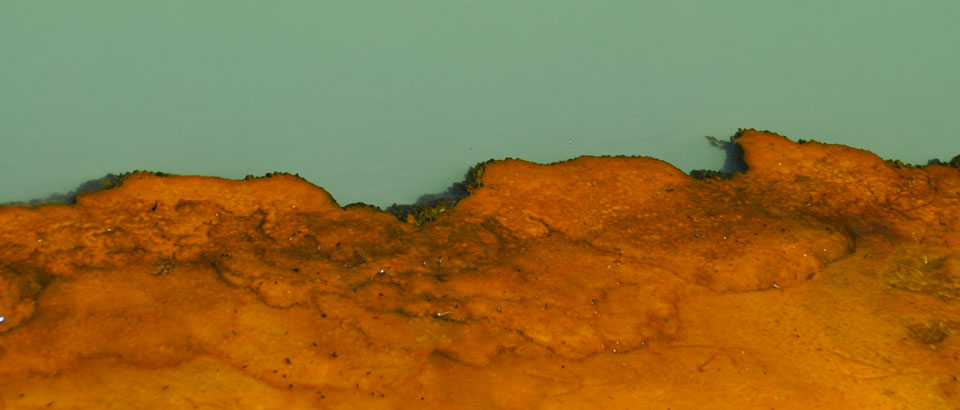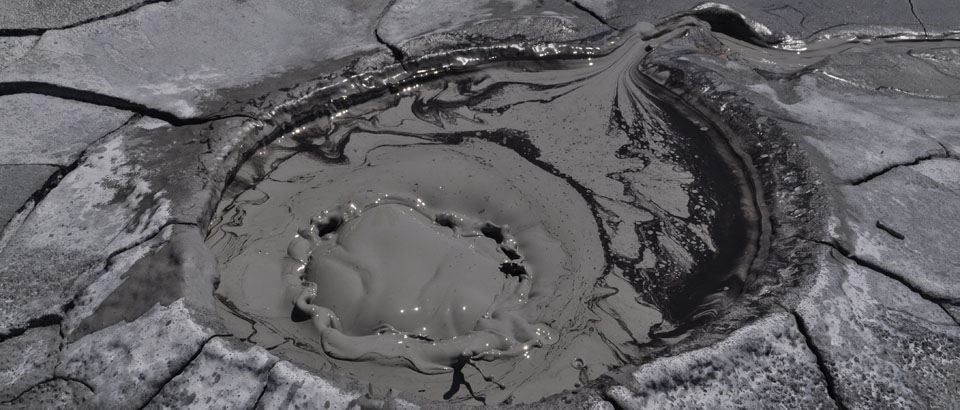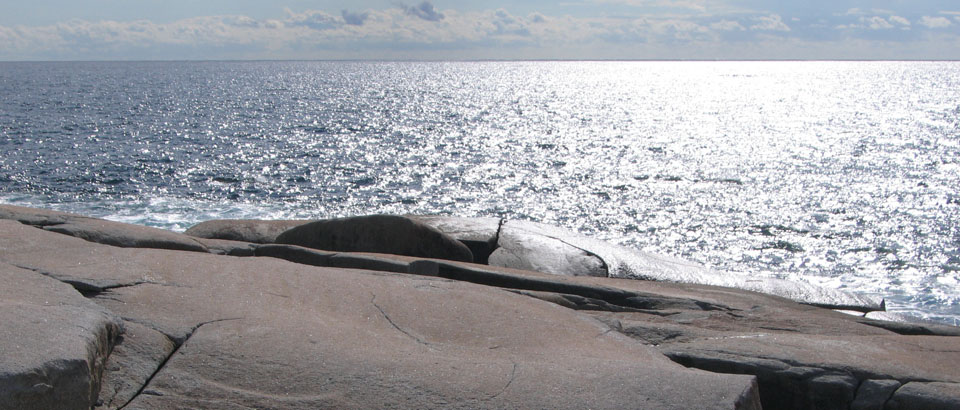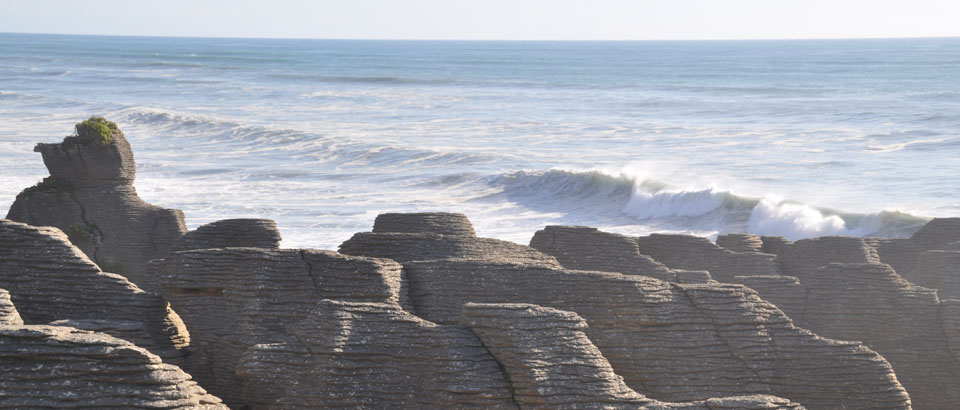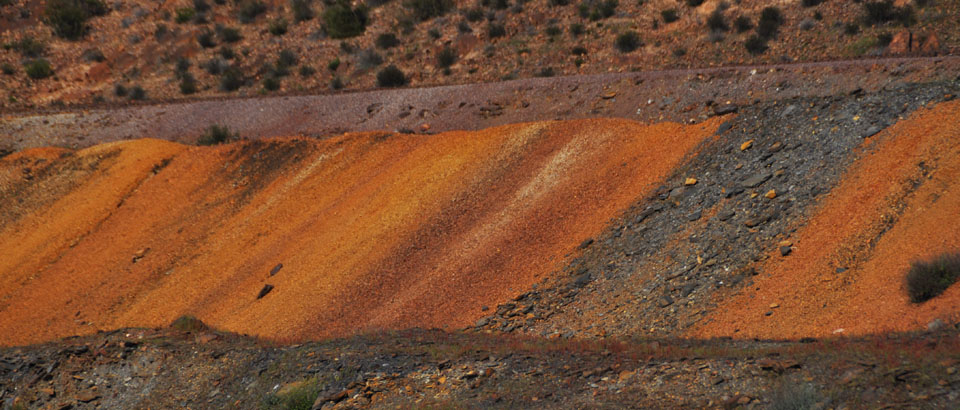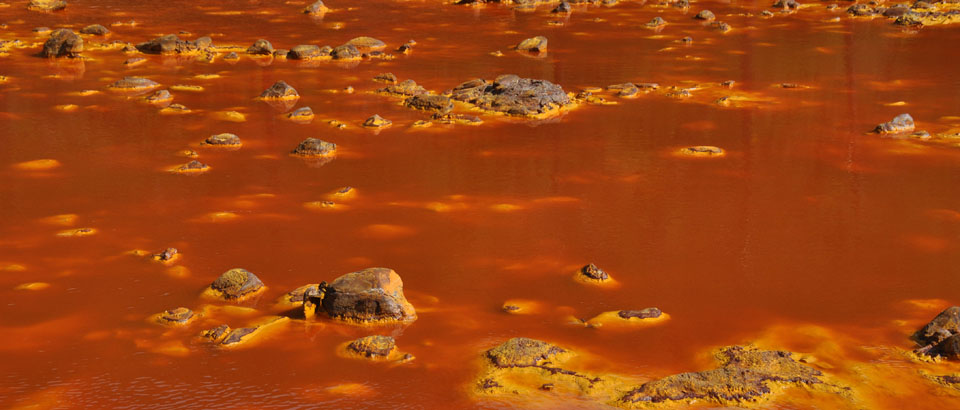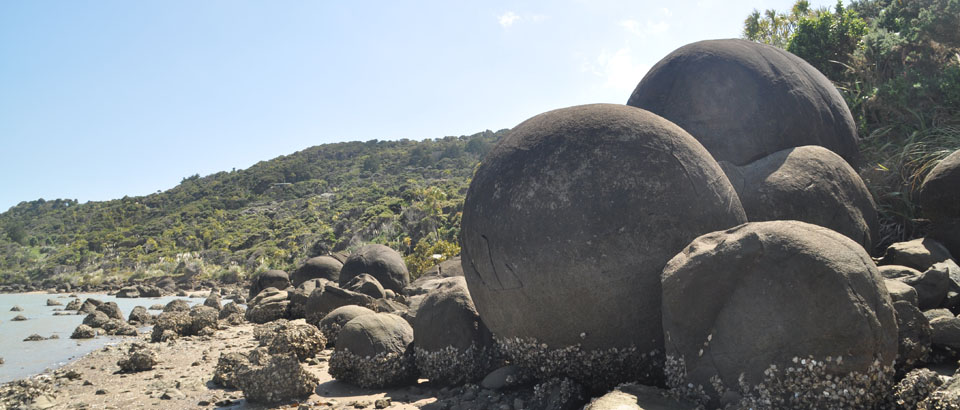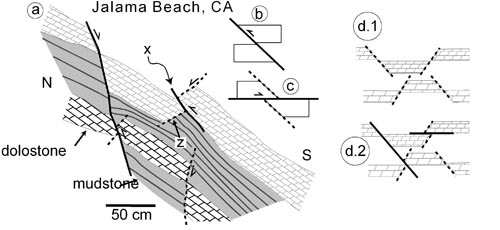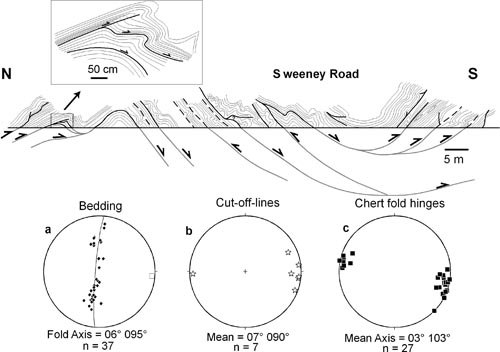Geometry of inverted faults and related folds in the Monterey Formation: implications for the structural evolution of the Southern Santa Maria Basin, California. G. Gutiérrez-Alonso y M.R. Gross, 1997, Journal of Structural Geology, 19, 1303-1321. DESCARGAR-DOWNLOAD.
RESUMEN-ABSTRACT
Abstract- A wide variety of mesoscopic structures observed in the Monterey Formation of coastal California reveal contrasting styles of deformation among mechanical units and provide a relative chronology of Neogene deformation for the southern Santa Maria Basin. These structures, which include ptygmatically folded veins, folded beds of chert, inverted normal faults, fault-propagation folds, and axial planar breccia zones document an early extensional phase in the middle to late Miocene followed by two distinct episodes of contraction between the Pliocene and the present. Miocene normal faults in interbedded carbonates and mudstones were inverted, resulting in geometries that include normal faults truncated by bedding plane detachments, low angle thrusts, thrust duplexes, and normal faults reactivated in reverse. Fault block geometry, drag folds, and culmination folds are characteristic features that help identify inverted structures. Normal fault inversion coincides with the development of early chert folds and related structures higher in the stratigraphic section, representing a regional phase of layer-parallel contraction. The second phase of regional contraction resulted in the development of a fold and thrust belt, which in the Monterey Formation is manifested by detachment and fault-related folds aligned parallel to regional fold axes. Effects of silica diagenesis contribute to the development of mesoscale structures throughout the deformation history of the Monterey Formation.


